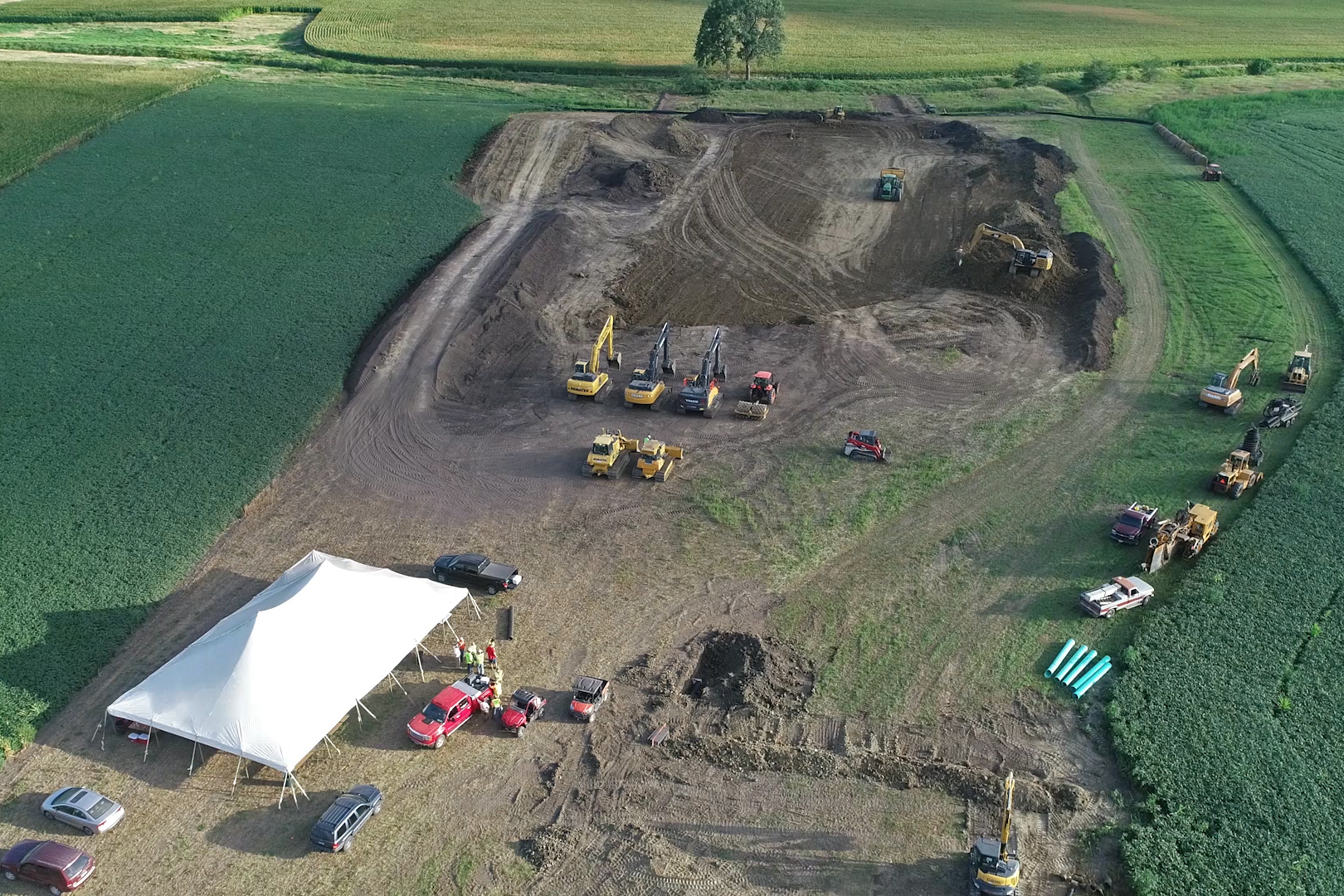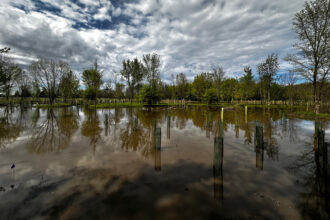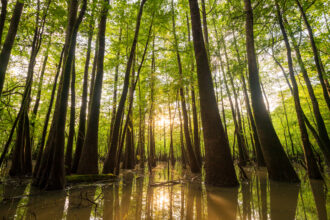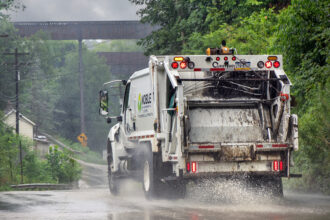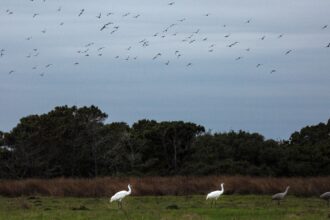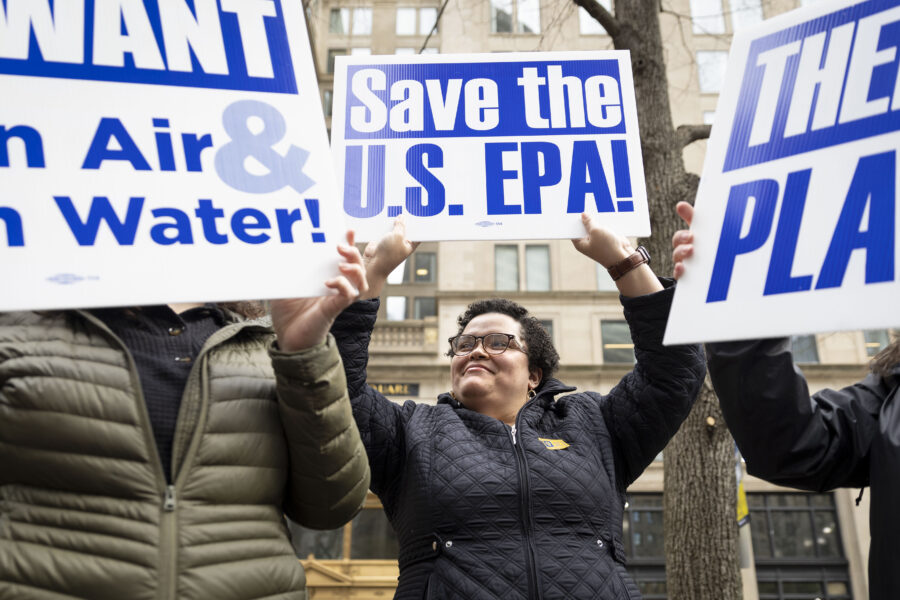One September morning Jim Fulton was pumping fuel into a combine harvester and watching the sky for rain.
Fulton’s family has been farming in Illinois since the 1890s. Fulton, who now grows mostly soybeans and corn, said he thinks a lot about how to protect the land. That explains, in part, why he has created a man-made wetland on his 690-acre property in Livingston County, a method that has been gaining traction as an agricultural innovation.
“My dad was conservation-minded. It’s kind of been passed on to me,” said Fulton, 69. When a Chicago-based nonprofit called the Wetlands Initiative gave a presentation in 2018 on “smart wetlands,” Fulton said he thought, “well, that sounds interesting.”
About three-fourths of the land in Illinois is farmland. Agricultural fertilizers washed off fields during storms end up in water bodies, a process called nutrient pollution. Runoff from many states, including Illinois, contributes to a massive “dead zone” choking off much marine life in the Gulf of Mexico. Closer to home, it can contaminate drinking water and trigger dangerous algal blooms.
Wetlands are one of nature’s solutions. Through soil, plants and microbes, wetlands filter nitrates and phosphorus from fertilizer runoff as well as offer a habitat for wildlife. Fulton had already experimented a bit by seeding a pond on his property and adding cover crops across acres of land to help prevent runoff when the opportunity with the Wetlands Initiative arose.
“Farmers are contributing to the nutrient loss into the rivers, and I think we need to be part of the solution to that since we’re part of the problem,” Fulton said in a phone conversation.
Fulton and the Wetlands Initiative staff discussed how it could work on his farm. The nonprofit assessed Fulton’s soil composition and found that wetlands could flourish on one plot. Federal grants for the conservation efforts, through the U.S. Department of Agriculture, could likely cover the cost, the Wetlands Initiative advised.
Within a year, Fulton applied for funds from the USDA’s Environmental Quality Incentives Program to build wetlands that, in total, cost about $69,000. The nonprofit offset what the USDA didn’t cover and organized a team of contractors who, with bulldozers and excavators, carved out a massive deep hole in a northwest corner of his farm within a week.
Today, the Fulton wetland straddles an acre of land and is surrounded by more than two acres of pollinator habitat—plants that attract bees, wasps, butterflies and birds.
The artificial wetland is basically a watery foliage-filled rectangle with sloping banks, Fulton explained. There are “different types of tall reeds, and then there’s some smaller arrowhead-type of plants that are low to the ground. It’s completely full of plant growth,” he said.
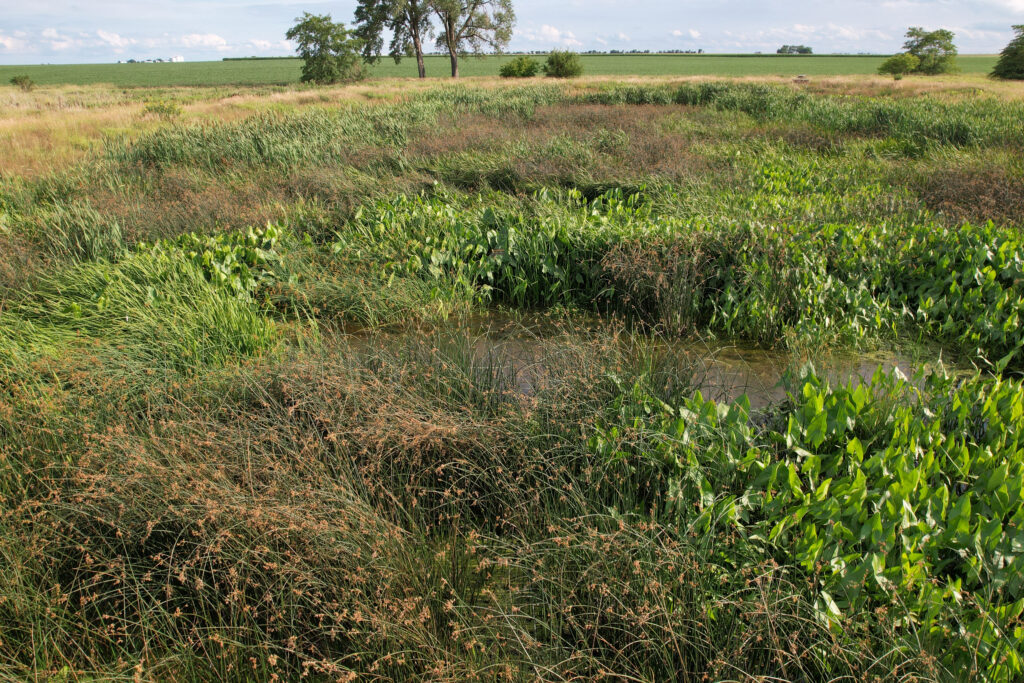
When it rains, “the water level comes up. The water works its way down from one end to the other. There’s berms and low spots to catch the water and move the water around so it doesn’t just go straight through,” Fulton said. “And then the water goes out the outlet. And hopefully in the time that it’s taken for it to go through, that’s removed a lot of the phosphates and nitrogen.”
Fulton is one of six farmers in Illinois who have benefited from the Wetlands Initiative work. Early measurements suggest big reductions in nitrate runoff, the group says. The nonprofit is now helping to change the culture on how to deal with runoff risk, said president Paul Botts.
“The new part here is having farmers choose to do it on their working farms,” he said.
Aimed at Nitrate Treatment
The Wetlands Initiative, which first learned about constructing wetlands on farms from the Illinois arm of The Nature Conservancy, is planning seven such projects to be built in 2026. Dozens of other farmers have expressed interest, Botts said.
“Wetlands, of course, offer a whole suite of benefits, but this one is aimed at nitrate treatment,” he said. “It’s very specific. It can do a miraculous job if it’s put in the right place.”
Jill Kostel, the initiative’s water resources program director, said the staff plans every project “to be a self-sustaining ecosystem” and, not surprisingly, farmers want to be assured that the changes make sense both financially and environmentally.
She said the initiative’s planners try “our best with the design to minimize the amount of earth moving. And that’s one of our challenges: How can we hit all the design specifications that we need to make for them to get government money, but yet try to do it in a way that’s most economical?”
The nonprofit oversees planning and on-site work. It looks for parcels on a farm that are not prime cropland. Still, the value of creating wetlands isn’t always well understood by farmers.
Some mistakenly believe that wetlands create more flooding, Botts said, but the opposite is true. The Wetlands Initiative seeks to educate and explain that “this is about the great nitrate runoff crisis,” he said, and “this is also about how you could be part of the solution.”
Illinois and much of the Midwest was historically covered in wetlands, areas where water is present for long enough periods of time throughout the year that water-adapted plants grow, and the chemistry of the soil is permanently changed. Wetlands had been protected for decades by pivotal federal laws, most notably the Clean Water Act of 1972.
The bipartisan act became known as the “bedrock environmental law” that established protections against water pollution. However, in 2023, the Supreme Court in Sackett v. the Environmental Protection Agency significantly rolled back wetlands protections.
This story is funded by readers like you.
Our nonprofit newsroom provides award-winning climate coverage free of charge and advertising. We rely on donations from readers like you to keep going. Please donate now to support our work.
Donate NowThe decision reduced what was worthy of protection by requiring that wetlands possess “a continuous surface connection” to a larger, protected body of water. Researchers worry the new definition will have a drastic impact on wetlands, which worldwide are disappearing faster than any other ecosystem.
A report in March from the Natural Resources Defense Council indicated that at least 60 percent of individual wetlands across the United States could now be unprotected. A study published in September by researchers at the University of Illinois Urbana-Champaign found that following the Sackett ruling, more than 70 percent of Illinois wetlands will now likely be unprotected.
The researchers, from the university’s Prairie Research Institute, considered three parameters— flood frequency, spatial distance and flow permanence requirements—to help calculate the impact of different scenarios.
Chelsea Peterson, a graduate student and lead researcher of the study, cautioned that it was difficult to predict how the Sackett ruling would be implemented because federal agency guidance on the matter is unclear.
Local Ordinances Can Help
Local regulations can make a difference in protecting these vulnerable ecosystems. The Prairie Research Institute researchers increased their estimates for wetlands protection as a result of municipal and county ordinances in northeastern Illinois.
“It’s really up to the public stakeholders and policymakers to decide what we want to do with our streams and wetlands,” Peterson said.
Jeffrey Matthews, a natural resources and sciences professor who co-authored the study, said they hoped to underscore how useful wetlands were to communities.
“We want people to understand that wetlands provide natural flood insurance, that they provide a buffer against [an] atmosphere of warming,” Matthews said. “Wetlands are important for drinking water security because they’re recharging aquifers, and they provide a water-quality improvement benefit. And wetlands also have a lot of recreational value for activities like hunting or bird watching.”
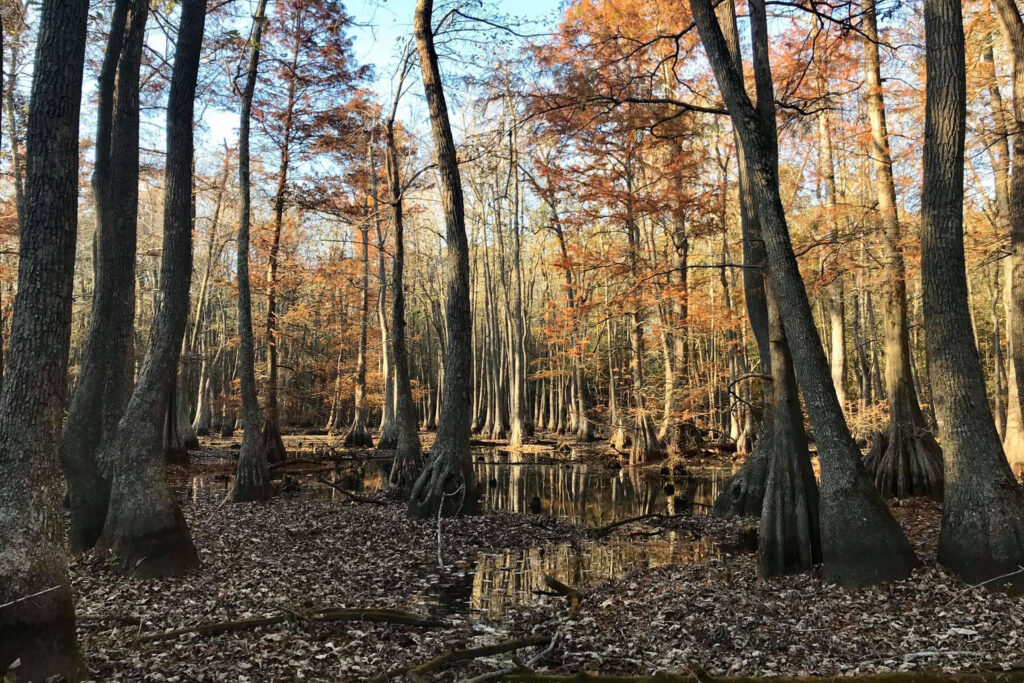
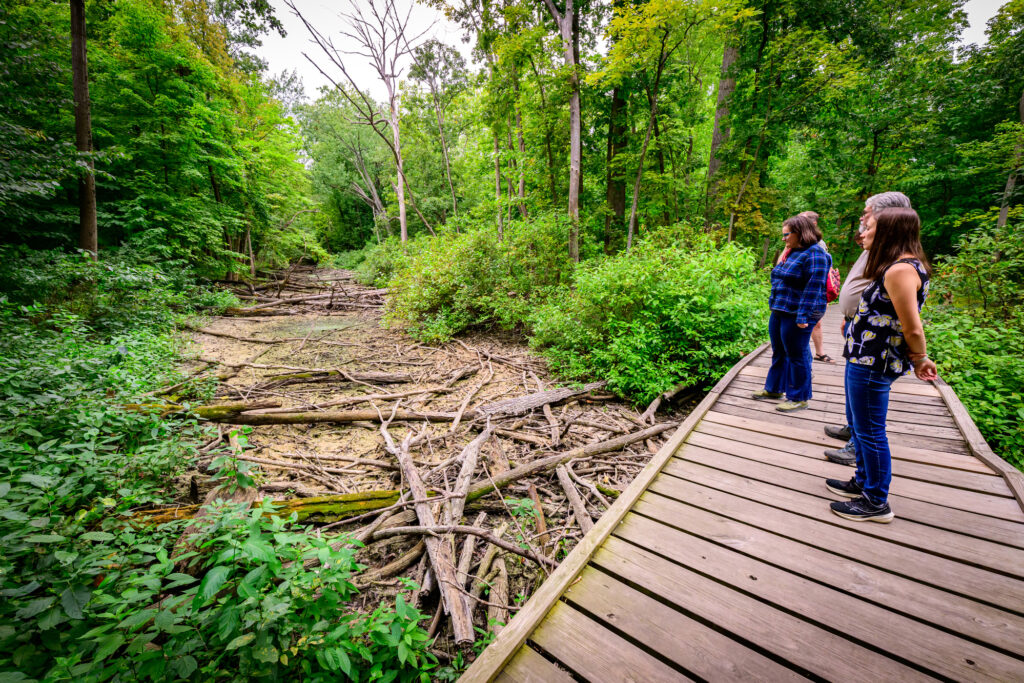
He hopes the study’s findings will help inform discussions in Illinois, from restoration strategies and local policies to “what’s at stake if those wetlands are lost.”
Lawmakers have attempted to pass a statewide wetlands protection law since the early 2000s but so far have failed. David McEllis, Illinois legislative director for the nonprofit Environmental Law & Policy Center, said he worked with state lawmakers on a bill in the 2024 session that aimed to institute wetlands protections but was opposed by groups including developers, real estate agents, road builders and the Illinois Farm Bureau.
Across the country, agricultural interests have fought against environmental protections that impose requirements on farming, saying such efforts should be voluntary. That’s also the Illinois Farm Bureau’s perspective on wetlands.
The farm bureau “recognizes that high-value wetlands provide important ecological benefits” and its members “support reasonable, consistent, science-based efforts to protect them,” Sanjay Sofat, the group’s director of environmental policy, said in a statement to Inside Climate News. Still, “wetland protection policies must also respect the property rights of landowners and the essential role of drainage districts in managing agricultural landscapes.
“We support voluntary, incentive-based programs that promote conservation while preserving farmers’ ability to manage their land productively and responsibly,” the statement said.
Illinois’ Department of Natural Resources has been working on a report to define the scope of wetlands protection, McEllis said. That could help with future legislative attempts.
Robert Hirschfeld, director of water policy for the nonprofit Prairie Rivers Network, told WCIA TV in September that his group and others are proposing a revised state wetlands protection law, and the bill would likely be discussed in the 2026 session.
In a statement to Inside Climate News, Hirschfeld wrote: “Two and a half years after the U.S. Supreme Court stripped away federal protections for wetlands, Illinois has yet to respond. Unless the state acts, most of our remaining wetlands will remain vulnerable to destruction.”
Matthews of the University of Illinois Urbana-Champaign said wetlands benefit farmers and agriculture in quantifiable ways. “They reduce flood risk to crop land because wetlands store flood water and release it slowly to streams over time. …They improve water quality by filtering nutrient runoff and by improving the quality of wastewater flows from agricultural lands,” he said.
Fulton, the Livingston County farmer, said the Wetlands Initiative work has proved its worth over the past seven years. “It’s taking quite a bit of nitrogen out, so it’s doing what it’s supposed to do,” he said.
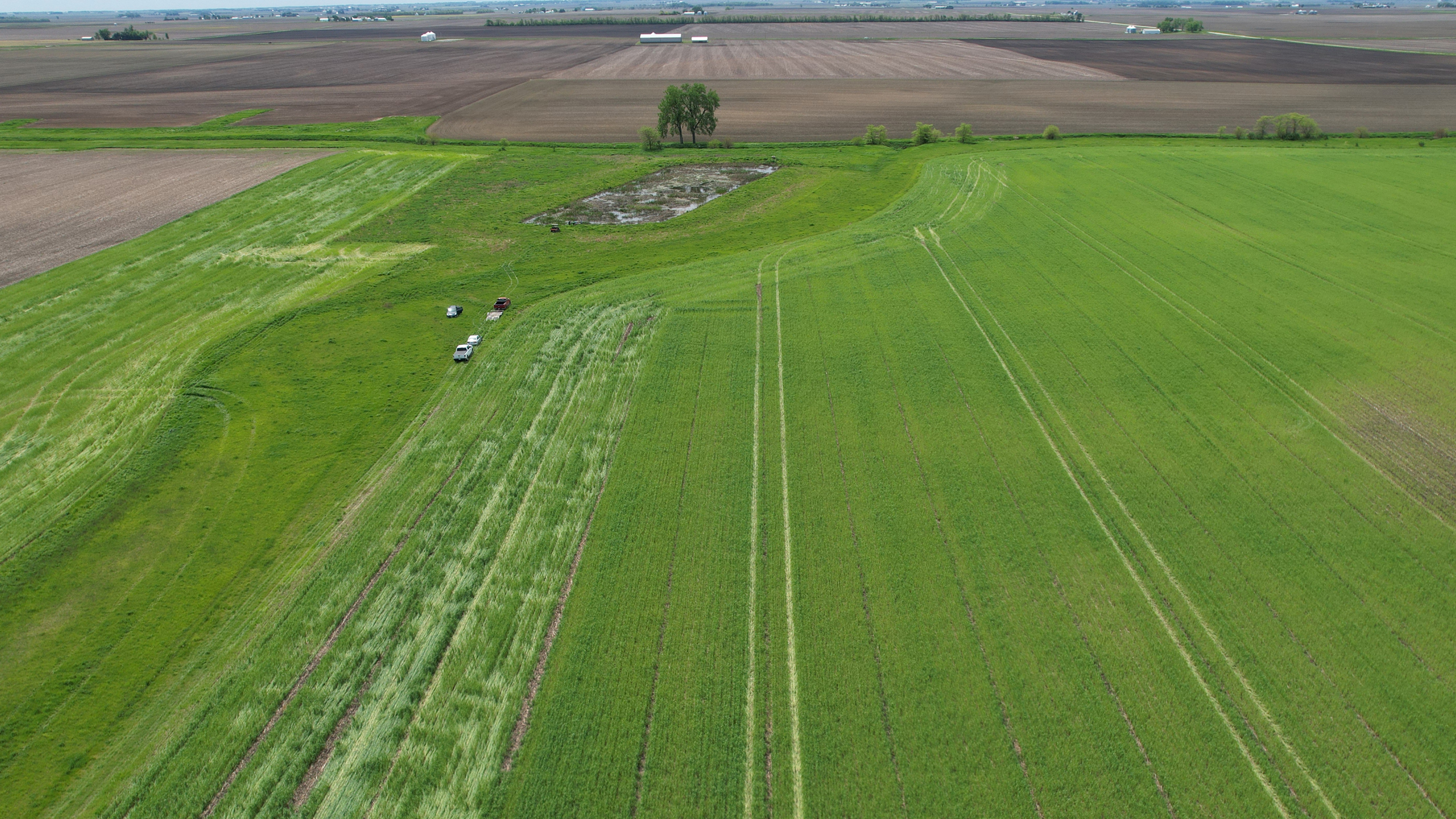
The pollinator habitat was “kind of slow to start,” he said, but Wetlands Initiative employees return three or four times a year to check for problems. Fulton now sees this patch of farmland supporting a bounty of wildlife, including deer, ducks and, most recently, a few baby pheasants.
“We’ve had nesting ducks, herons, egrets in the summertime, hundreds of red-winged blackbirds that are out roosting in all the tall grasses, which is great. A lot of frogs. We had an exceptionally high amount of water, and at one point, we even had fish in it,” he said, which came as a surprise.
“And the deer come—you see deer tracks in there all the time,” Fulton said. “When the water’s down, they come in there and get a drink.”
Correction: This story was updated Oct. 23, 2025, to correct a reference to a legislative effort by the Prairie Rivers Network and other groups.
About This Story
Perhaps you noticed: This story, like all the news we publish, is free to read. That’s because Inside Climate News is a 501c3 nonprofit organization. We do not charge a subscription fee, lock our news behind a paywall, or clutter our website with ads. We make our news on climate and the environment freely available to you and anyone who wants it.
That’s not all. We also share our news for free with scores of other media organizations around the country. Many of them can’t afford to do environmental journalism of their own. We’ve built bureaus from coast to coast to report local stories, collaborate with local newsrooms and co-publish articles so that this vital work is shared as widely as possible.
Two of us launched ICN in 2007. Six years later we earned a Pulitzer Prize for National Reporting, and now we run the oldest and largest dedicated climate newsroom in the nation. We tell the story in all its complexity. We hold polluters accountable. We expose environmental injustice. We debunk misinformation. We scrutinize solutions and inspire action.
Donations from readers like you fund every aspect of what we do. If you don’t already, will you support our ongoing work, our reporting on the biggest crisis facing our planet, and help us reach even more readers in more places?
Please take a moment to make a tax-deductible donation. Every one of them makes a difference.
Thank you,

